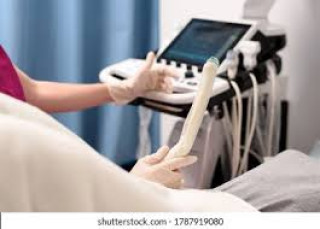Can endometrial cancer be found early?created at May 05, 2009 1,228 1,228 Early detection of endometrial cancer is possible, |
How do you diagnose endocrine cancer?created at May 04, 2009 1,195 1,195 Diagnosing endocrine cancer typically involves a combination of physical examination, |
Precision Treatment: Understanding Stereotactic Radiosurgery for Brain Tumorscreated at May 04, 2009 1,354 1,354 Stereotactic radiosurgery (SRS) is a precise radiation therapy technique used to treat brain tumors and other lesions.It delivers a highly focused, |
Understanding Vulvar Cancer Diagnosis: What to Expectcreated at May 05, 2009 1,263 1,263 Vulvar cancer is diagnosed through a combination of methods, |
The basic information for Stomach cancercreated at May 03, 2009 1,317 1,317 Stomach cancer, |
How is bone cancer diagnosed?created at May 03, 2009 1,355 1,355 Bone cancer diagnosis begins with a thorough medical history and physical examination, |
How will a physician make a diagnosis of head and neck cancer?created at May 09, 2009 1,177 1,177 Diagnosis of head and neck cancer typically begins with a thorough medical history and physical examination, |
Understanding the Diagnostic Process for Liver Cancercreated at May 04, 2009 1,322 1,322 If you’re concerned about liver cancer, |
Unveiling the Culprits: Understanding the Causes of Sinusitisupdated at Oct 30, 2025 1,268 1,268 Sinusitis, |
Understanding Sinus Drainage: The Role of Ciliaupdated at Nov 08, 2025 1,318 1,318 Ciliary Action: The Body's Microscopic Conveyor BeltTiny, |
Demystifying Sinusitis Diagnosis: Insights into the Processupdated at Nov 08, 2025 1,452 1,452 Clinical EvaluationThe initial step in diagnosing sinusitis revolves around a comprehensive clinical evaluation.This includes a detailed discussion of your medical history, |
Exploring the Connection Between Sinus Problems and Immune Deficiencycreated at May 11, 2009 1,263 1,263 While sinus infections are commonly attributed to viral or bacterial causes, |
Navigating Diagnostic Clarity: Understanding Dilation and Curettage (D&C) for Cervical Healthcreated at May 04, 2009 1,384 1,384 In certain instances, |
Precision and Clarity: Unraveling the Significance of Conization in Cervical Cancer Diagnosiscreated at May 04, 2009 1,426 1,426 Conization, |
Unveiling the Role of Endocervical Curettage (ECC) in Cervical Cancer Diagnosiscreated at May 04, 2009 1,335 1,335 Endocervical Curettage (ECC) emerges as a diagnostic procedure aimed at exploring the inner recesses of the cervix, |
Precision in Practice: Understanding LEEP for Cervical Cancer Diagnosiscreated at May 04, 2009 1,270 1,270 Loop Electrosurgical Excision Procedure (LEEP) is a precise and effective method employed in the biopsy process for diagnosing cervical cancer. This procedure involves the skillful use of an electric wire loop to delicately slice off a thin, |
Decoding the Pelvic Exam: A Comprehensive Women's Health Assessmentupdated at Nov 14, 2025 1,286 1,286 A pelvic exam is a vital part of comprehensive women's healthcare.It involves a thorough evaluation of key reproductive organs. What a Pelvic Exam EntailsDuring a pelvic exam, |
Empowering Women's Health: Early Detection of Cervical Cancer"created at May 04, 2009 1,291 1,291 Prioritizing regular pelvic exams and Pap tests emerges as a powerful strategy for the early detection and prevention of cervical cancer. These essential screenings play a pivotal role in identifying precancerous conditions, |
Shedding Light on Stomach Cancer: Detecting Through Barium Upper GI Radiographscreated at May 04, 2009 1,336 1,336 In the quest for effective detection and diagnosis of stomach cancer, |
Understanding Biopsies for Cervical Cancer Diagnosiscreated at May 04, 2009 1,261 1,261 Biopsies are pivotal in diagnosing cervical cancer, |
Unveiling the Fog - Understanding the Causes of Cataractscreated at Nov 18, 2009 1,312 1,312 Unveiling the Fog - Understanding the Causes of CataractsHave you ever wondered what causes those cloudy patches in your vision, |
What can I do to detect it?created at May 04, 2009 1,316 1,316 Most health problems respond best to treatment when they are diagnosed and treated as early as possible. This is especially true of colorectal cancer. Treatment is most effective before the disease spreads. People can take an active role in the early detec... |
The risk factors for developing colorectal cancer?created at May 04, 2009 1,458 1,458 Some people are more likely to develop colorectal cancer than others. Studies have found that certain factors increase a person’s risk. The following are risk factors for this disease: Polyps – Most (perhaps all) colorectal cancers develop in polyps. Pol... |













